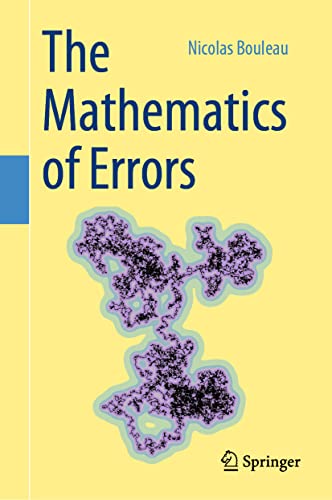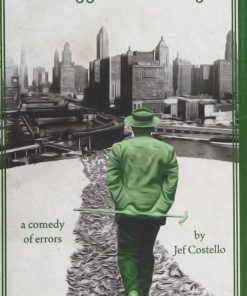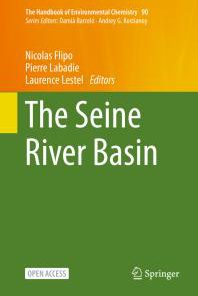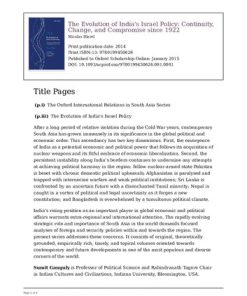The Mathematics of Errors 1st Edition by Nicolas Bouleau 9783030885755 3030885755
$50.00 Original price was: $50.00.$25.00Current price is: $25.00.
The Mathematics of Errors 1st Edition Nicolas Bouleau – Ebook Instant Download/Delivery ISBN(s): 9783030885755, 3030885755
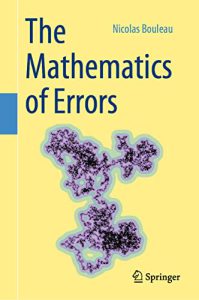
Product details:
- ISBN 10:3030885755
- ISBN 13: 9783030885755
- Author: Nicolas Bouleau
The Mathematics of Errors
Table contents:
Part I A la Gauss Calculations
Gauss formulas for small errors
1 The Different Approaches
1.1 What Is Taught Ordinarily and Its Criticism
1.2 Classification of Error Calculi
2 Finite-Dimensional Examples
2.1 Viscous Friction
2.2 Joseph Bertrand’s Chords
2.3 The Ptolemaic System
2.4 Velocity Fields
2.5 Dynamical Systems
2.6 Error Expressed as a Function of the Measured Value
2.7 Gauss’ Quadratic Operator
2.8 The Riemann Integral of a Poorly Known Function
3 An Intuitive Introduction to Error Structures
3.1 Order of Magnitude of Errors
3.2 Description of Small Errors by Biases and Variances
3.2.1 In Dimension 1
3.2.2 In Dimension 2
3.3 The Intuitive Notion of Error Structure
3.3.1 Error Structure, Provisional Definition
3.3.2 The Bias
3.3.3 In Summary
3.4 How to Perform an Error Calculation
3.5 Application: Integration by Parts for a Markov Chain
4 Weakly and Strongly Random Errors
4.1 The Dichotomy of Small Errors
4.2 Errors Due to Graduations are Strongly Random
Part II Probabilistic and Functional Models
1 Defining an intrinsic error calculus
5 Strongly Continuous Semi-Groups and Dirichlet Forms
5.1 Reminders
5.2 Strongly Continuous Semi-Groups on a Banach Space
5.3 The Ornstein–Uhlenbeck Semi-Group on IR and the Associated Dirichlet Form
5.4 Determination of the Domain ID for this Semi-Group
6 Error Structures
6.1 Fundamental Definition and First Examples
6.2 Reasoning in Error Structures
6.2.1 Continuity of Gamma
6.2.2 Approximation by Bounded Functions
6.2.3 Approximation by Sub-sequences
6.2.4 Weakly Bounded Sequences
6.3 Lipschitz Functional Calculus
6.4 Existence of Densities
6.5 Closability of Pre-structures and Other Examples
7 Images and Products of Error Structures
7.1 Images
7.2 Finite Products
7.3 Infinite Products
8 The Gradient and the Sharp and Other Calculation Tools
8.1 Simple Commented Examples
8.1.1 Cathode Ray Tube
8.1.2 Comment on the Choice of Gamma [X] and A[X]
8.1.3 Interest Rate Models
8.2 The Gradient and the Sharp
8.2.1 The Gradient
8.2.2 The Sharp
8.2.3 The Adjoint δ or “Divergence” Operator
8.3 Integration by Parts Formulas
8.4 Sensitivity of the Solution of an Equation to a Functional Coefficient
8.4.1 Error Structures on Functional Spaces
8.4.2 Choice of the a priori Probability Measure
8.4.3 Choice of Gamma
8.4.4 Analytical Functions in the Unit Disk
8.4.5 Functions in L2
8.4.6 Sensitivity of an Ordinary Differential Equation
8.5 Sub-structures and Projections
8.5.1 Error Sub-structures
8.5.2 Remarks on Projections and the Conditional Calculus
8.6 Measure-Gradient Stable Under Images
8.6.1 The Measure-Valued Gradient
8.6.2 Images
8.6.3 Example
9 Error Structures on Fundamental Spaces
9.1 Error Structures on the Monte Carlo Space
9.1.1 Structure Without Boundary Terms
9.1.2 Example: Sensitivity of a Markov Chain
9.1.3 The Pseudo-Gaussian Structure on the Monte Carlo Space
9.1.4 Hoeffding–Sobol Decomposition. Global or Local Sensitivity Analysis
9.2 Error Structures on the Wiener Space
9.2.1 The Wiener Stochastic Integral
9.2.2 Product Error Structures
9.2.3 The Ornstein–Uhlenbeck Structure
9.2.4 Structures with Erroneous Time
9.2.5 Generalized Mehler Type Structures
9.3 A Donsker Type Theorem for the Ornstein–Uhlenbeck Structure
9.3.1 Convergence in Dirichlet Law
9.3.2 Convergence of an Erroneous Random Walk
9.3.3 Application
9.3.4 Asymptotic Independence
9.4 Error Structures on the Poisson Space
9.4.1 Construction of a Poisson Random Measure with Intensity mu
9.4.2 White Structure on the General Poisson Space
9.4.3 The Error Structure of Carlen–Pardoux
Part III The Subtleness of the Notion of Bias
1 Non-antisymmetry of approximation errors
10 Approximation and Bias Operators
10.1 Bias Operators
10.2 Errors Associated with the Glivenko–Cantelli Theorem
10.3 Typical Formulas of Finite-Dimensional Error Calculus
10.3.1 Typical Triplets
10.3.2 Series with Independent Increments
10.3.3 Queues of Martingales
10.4 Natural Inaccuracy of the Brownian Motion
10.4.1 Natural Inaccuracy in the Central Limit Theorem
10.4.2 The Extended Donsker Theorem by Approximations
10.5 Empirical Laws and Brownian Bridges
10.5.1 Natural Inaccuracy of the Brownian Bridge
10.5.2 Erroneous Empirical Laws and Generalized Mehler Type Structures on the Brownian Bridge
10.6 Another Approach to Donsker’s Theorem
10.7 Stochastic Integrals
10.8 Stochastic Differential Equations and the Euler Scheme
10.9 Feedback on Weakly Random Errors
11 Computations and Simulation Methods
11.1 The Bias Simulated by Clusters
11.2 Geometric Visualization of the Bias
11.3 The Shift Method
11.4 Sequences (of Regular Functions) Distributed …
11.4.1 Integration of Continuous Functions of First Chaos Functionals
11.4.2 An Effective Result
11.5 Speeding Up Simulations Thanks to Error Structures
11.5.1 Variance Reduction Thanks to the Bias
11.5.2 Comparison of Speeds
11.5.3 Direct Explicit Formulas
11.6 Minimizing the Error, Stochastic Euler Formulas
11.6.1 Cases Returning to the Classical Calculus of Variations
11.6.2 Variance Reduction of an Erroneous Variable
11.6.3 Stochastic Euler Equations
Part IV Error Structures in Applications
1 Identification of an Error Structure
12 Statistical Identification of Error Structures
12.1 The Cramer–Rao Inequality and Fundamental Identification
12.1.1 Regular Models
12.1.2 The Cramer–Rao Inequality
12.2 Change of Variables: The Injective Case
12.2.1 The Regular Injective Case
12.2.2 The Non-regular Injective Case
12.3 Remarks on the Non-injective Case
12.4 Product Structures
13 The Instantaneous Error Structure of a Stochastic Process
13.1 The Case of a Markov Process
13.2 Gaussian Stationary Processes
13.3 Non-Gaussian Strictly Stationary Processes
13.4 Example Related to Wiener Filtering
13.5 Investigations on Cumulative Errors
13.5.1 Approximate Sharp
13.5.2 Example
13.5.3 Martingales in the Sense of a Dirichlet Form
14 Models Inspired by Finance
14.1 The Instantaneous Error Structure of a Financial Asset
14.1.1 Geometric Brownian Motion and Log-Normal Homogeneous Error Structure
14.1.2 A Model with Three Compatible Currencies
14.2 Error Calculus on the Black–Scholes Model
14.2.1 Sensitivity of Theoretical Pricing and Hedging to Errors on Parameters
14.2.2 Errors due to the Trader in the B-S Model
14.3 The Case of a Diffusion Model
14.3.1 Sensitivity of the Results of the Theoretical Model to Errors on the Brownian Motion
14.3.2 Sensitivity of the Solution of an SDE to an Error on a Functional Coefficient of the Equation
14.3.3 Error on the Results of the Diffusion Financial Model due to a Misjudgement by the Trader
15 Examples in Physics
15.1 A Finite-Dimensional Example
15.2 Repeated Samples, Discussion of a Remark of Poincaré
15.3 Projective Systems and Repeated Samples
15.4 Calculation of Lengths by the Cauchy–Favard Method
15.5 Equilibrium Temperature in a Homogeneous Solid
16 The Principle of Arbitrary Functions and Error Structures
16.1 Asymptotic Error Structures Generated by Some Dynamical Systems
16.1.1 Limit Theorems of Poincaré–Hopf Type
16.1.2 Multidimensional Cases, Examples
16.2 Bias in the Arbitrary Functions Principle in Finite Dimensions
16.2.1 A Girsanov-Type Theorem for Error Structures
16.2.2 Rajchman Measures
16.3 The Principle of Arbitrary Functions on Wiener Space
16.3.1 Martingales of Rajchman Type
16.3.2 Sufficient Closability Conditions on the Wiener Space
16.3.3 Stochastic Differential Equations Derived from Mechanics
Part V Historical Elements and Research Themes
17 Error Calculations From Gauss and Laplace
17.1 Different Kinds of Error Calculations
17.2 Gauss, Inventor of the Quadratic Operator
17.3 Why Should We Ask the Quadratic Form to be Closed?
17.4 Dirichlet Forms Generated by an Approximation
17.5 “Small Errors”, What Does It Mean?
17.6 Origins of the Arbitrary Functions Principle
18 Extensions and Open Questions
18.1 Questions Related to Applications
18.1.1 Extension of Statistical Methods
18.1.2 Boundary Problems
18.1.3 Endomorphisms of Error Structures
18.1.4 Statistical and Quantum Physics
18.2 Deepening and Extensions of the Theory of Errors
18.2.1 The Cluster-Based Simulation Method
18.2.2 Extension of Fisher’s Information-Based Interpretation to Infinite Dimensions
18.2.3 Projective Limits with the Generator Instead of the Form
18.2.4 Empirical Distribution of Equi-Distributed Sequences
18.2.5 Instantaneous Error Structure of a Stochastic Process
18.2.6 Error Structures and Capacity Theory
18.3 Open Mathematical Problems and Conjectures
18.3.1 Characterization of Dirichlet Forms in Dimension 2 and above
18.3.2 The Energy Image Density (EID) Property Conjecture
19 Hints for Exercises
People also search:
the mathematics of errors
what are the types of errors in mathematics
definition of error in mathematics
mathematics error analysis
types of errors in mathematics pdf
You may also like…
Fiction - Contemporary Fiction
Fantasy - High Fantasy
History - African History
Fiction - Humour
Heidegger in Chicago A comedy of errors 2015th Edition Jef Costello
Earth Sciences - Rivers & Lakes
Languages - English as a Foreign Language & Reference
Business & Economics - Human Resources
Romance - LGBTQ+ Romance
Politics & Philosophy - Government & Politics
The Evolution of India s Israel Policy 1st Edition Nicolas Blarel

